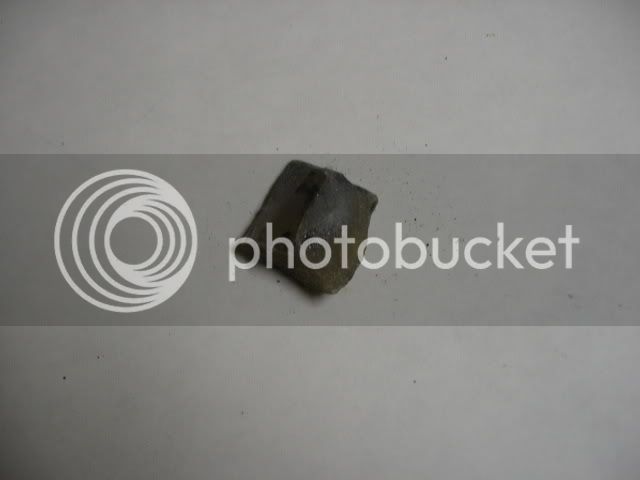Leonredbeard
54 Cal.
- Joined
- Apr 9, 2004
- Messages
- 1,863
- Reaction score
- 4
To all who are interested.
This flint has been in the jaws of my jeager for a year now. I would say that it has at least one hundred shots on it. I did not even so much as knap it before a smoothbore shoot the first Saturday here in June. During that shoot half of the edge crumbled away. The part that was left was quite thick, so I tapped it until it broke away to straight across. But it is quite thick now the whole way across. The only thing I had done with it before was to cock it a bit in the jaws of the cock when it misfired on rare occasion. The edge I was using the whole time is now done sparking. I could turn it around and use the other end for a few tens of shots, but it is quite short now. The lock is Chamber's early Germanic. It is possible that it is easy on flints, as almost all the flints I have used in it since I finshed building it in 1996 gave me long life with very little knapping. It is a boringly reliable lock. It is the lock that drove me to wheellocks for a new challenge! Hee Hee!
God bless.
volatpluvia
Ah.....I shall have to post the pics on the next post. I haven't put them on photobucket yet! And I don't feel like writing this all out again.
This flint has been in the jaws of my jeager for a year now. I would say that it has at least one hundred shots on it. I did not even so much as knap it before a smoothbore shoot the first Saturday here in June. During that shoot half of the edge crumbled away. The part that was left was quite thick, so I tapped it until it broke away to straight across. But it is quite thick now the whole way across. The only thing I had done with it before was to cock it a bit in the jaws of the cock when it misfired on rare occasion. The edge I was using the whole time is now done sparking. I could turn it around and use the other end for a few tens of shots, but it is quite short now. The lock is Chamber's early Germanic. It is possible that it is easy on flints, as almost all the flints I have used in it since I finshed building it in 1996 gave me long life with very little knapping. It is a boringly reliable lock. It is the lock that drove me to wheellocks for a new challenge! Hee Hee!
God bless.
volatpluvia
Ah.....I shall have to post the pics on the next post. I haven't put them on photobucket yet! And I don't feel like writing this all out again.






